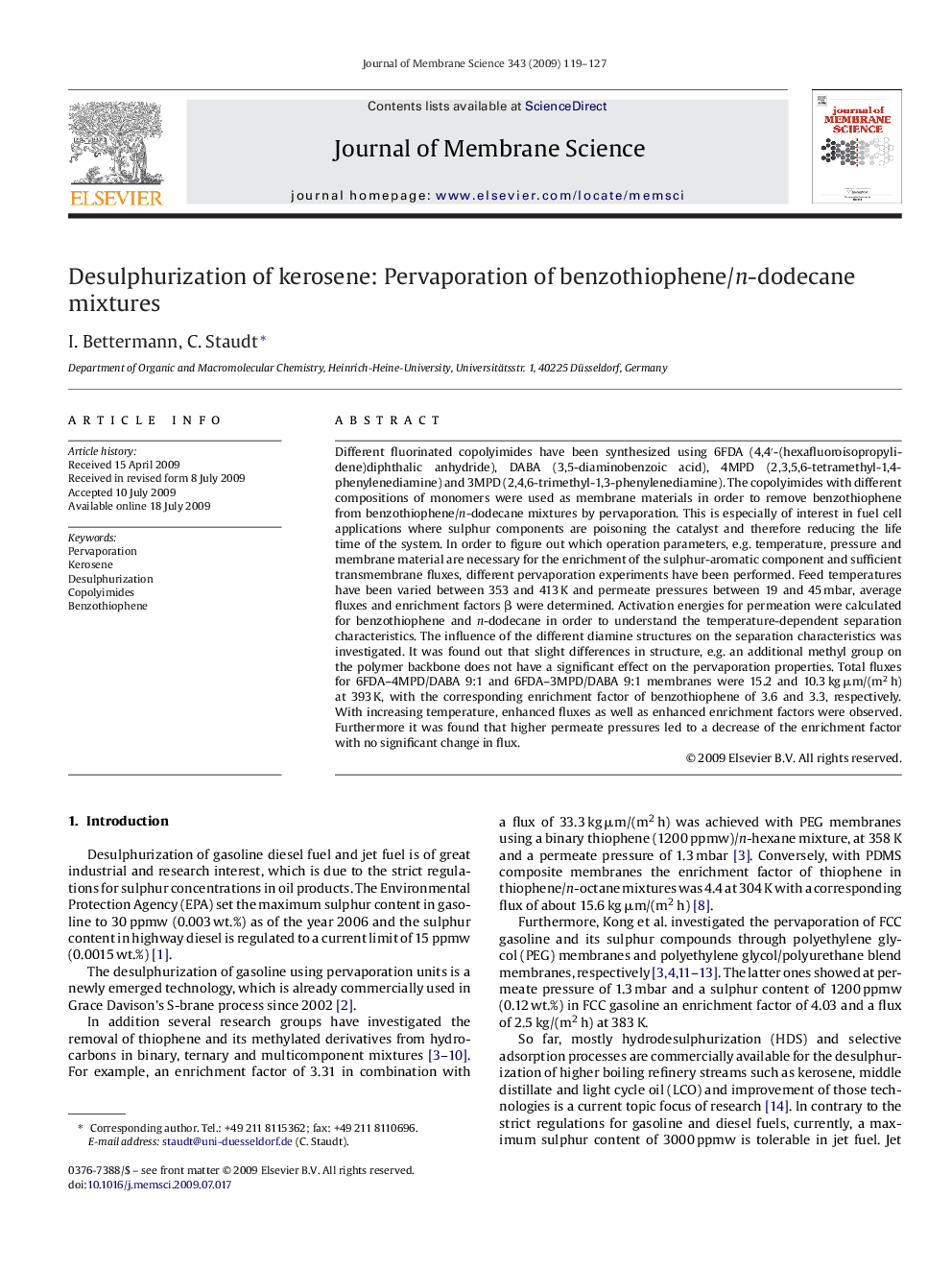| کد مقاله | کد نشریه | سال انتشار | مقاله انگلیسی | نسخه تمام متن |
|---|---|---|---|---|
| 636704 | 1456135 | 2009 | 9 صفحه PDF | دانلود رایگان |

Different fluorinated copolyimides have been synthesized using 6FDA (4,4′-(hexafluoroisopropylidene)diphthalic anhydride), DABA (3,5-diaminobenzoic acid), 4MPD (2,3,5,6-tetramethyl-1,4-phenylenediamine) and 3MPD (2,4,6-trimethyl-1,3-phenylenediamine). The copolyimides with different compositions of monomers were used as membrane materials in order to remove benzothiophene from benzothiophene/n-dodecane mixtures by pervaporation. This is especially of interest in fuel cell applications where sulphur components are poisoning the catalyst and therefore reducing the life time of the system. In order to figure out which operation parameters, e.g. temperature, pressure and membrane material are necessary for the enrichment of the sulphur-aromatic component and sufficient transmembrane fluxes, different pervaporation experiments have been performed. Feed temperatures have been varied between 353 and 413 K and permeate pressures between 19 and 45 mbar, average fluxes and enrichment factors β were determined. Activation energies for permeation were calculated for benzothiophene and n-dodecane in order to understand the temperature-dependent separation characteristics. The influence of the different diamine structures on the separation characteristics was investigated. It was found out that slight differences in structure, e.g. an additional methyl group on the polymer backbone does not have a significant effect on the pervaporation properties. Total fluxes for 6FDA–4MPD/DABA 9:1 and 6FDA–3MPD/DABA 9:1 membranes were 15.2 and 10.3 kg μm/(m2 h) at 393 K, with the corresponding enrichment factor of benzothiophene of 3.6 and 3.3, respectively. With increasing temperature, enhanced fluxes as well as enhanced enrichment factors were observed. Furthermore it was found that higher permeate pressures led to a decrease of the enrichment factor with no significant change in flux.
Journal: Journal of Membrane Science - Volume 343, Issues 1–2, 1 November 2009, Pages 119–127